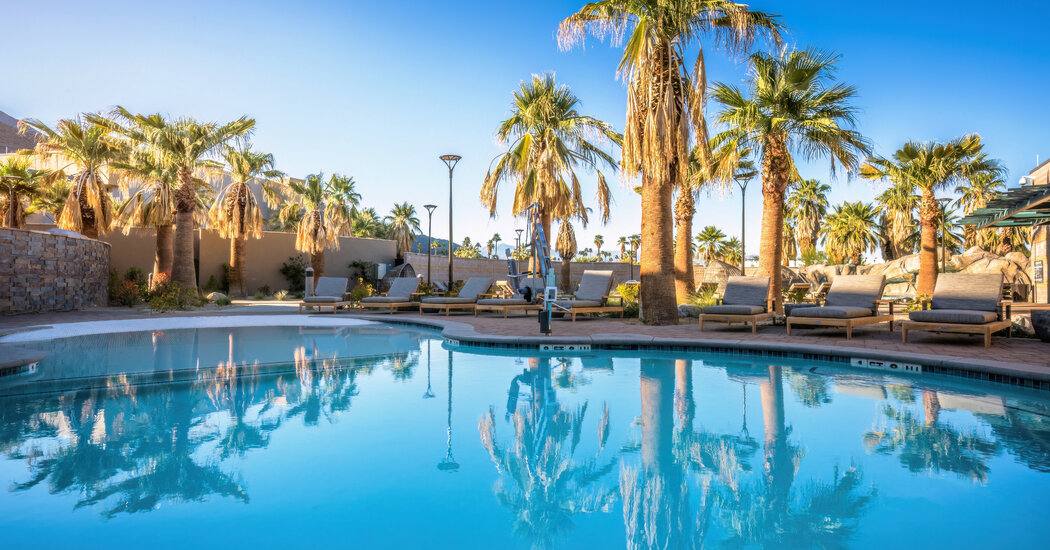Palm Springs conjures many images in the popular imagination: California oasis, Old Hollywood hide-out, golf and tennis hot spot, midcentury modern pilgrimage site. But long before Richard Neutra’s airy, glassy Kaufmann House or John Lautner’s concrete-domed Elrod House, there was Welwood Murray’s rickety wooden bathhouse.
That two-room shack, built over a hot spring in the late 1880s, was one of the first tourist attractions in the Coachella Valley — newly accessible by railroad to people with tuberculosis and other ailments who were seeking relief in the desert air and mineral water.
Mr. Murray, a Scottish rancher and entrepreneur, had secured a lease for his bathhouse from the Agua Caliente Band of Cahuilla Indians. But as the “Agua Caliente” in their name would suggest, that hot water was too important to their identity to leave in anyone else’s hands for long, and in the early 1900s, control reverted to the tribe.
“The hot mineral spring is essentially our heart and soul,” said Reid Milanovich, who has served as the tribal chairman since April 2022. “We’ve been using these waters for generations for purposes of both spiritual healing and physical healing.”
The tradition of sharing the spring with visitors has also spanned generations: The tribe ran a succession of bathhouses, then opened the Spa Resort Hotel on the site in 1963. When this multimillion-dollar, 131-room Modernist complex debuted, it became the place to take the local waters. Indeed, it was the only place, because it retained exclusive access to the Agua Caliente spring, the sole option in town. So when everything in the complex except the casino closed in 2014, anyone hoping for a warm mineral soak in Palm Springs was stuck on dry land.
The tribe had determined that the 1950s-era water collection system needed enough repair to require the spa’s demolition — a catalyst for rethinking the entire site. “We’re talking about one of the most important sections of the reservation,” Mr. Milanovich said. “We had to make sure it would be protected for future generations.” The best way to do so, tribal members and leaders concluded, was to create experiences that were educational and celebratory of Cahuilla heritage.
After nearly a decade of work on the site, and one of the most significant Indigenous archaeological recoveries in the country — thousands of artifacts unearthed; thousands of years added to the local historical record — the new Spa at Séc-he…
Click Here to Read the Full Original Article at NYT > Travel…
